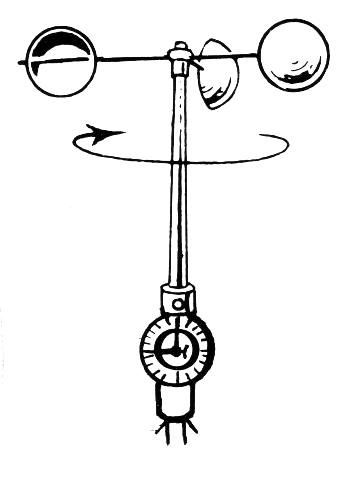Choosing the Right Anemometer: A Comprehensive Purchasing Guide
Choosing the Right Anemometer: A Comprehensive Purchasing Guide
Blog Article
Anemometers Revealed: Recognizing Their Value in Ecological Surveillance and Safety And Security Measures
The role of anemometers in ecological surveillance and precaution is frequently ignored, yet their importance is indisputable. These instruments have a lengthy background rooted in clinical query and technological developments, developing to become vital tools in various areas. From weather forecasting to aviation security, anemometers play a critical function in offering accurate data that educates decision-making procedures and improves overall security. Understanding the ins and outs of anemometers reveals a world of critical insights that are basic to our understanding of the atmosphere and the steps we require to make sure safety.
History of Anemometers
The evolution of anemometers can be traced back to the old human beings where primary wind determining gadgets were initial utilized. One of the earliest known anemometers was the hemispherical mug anemometer invented by Leon Battista Alberti in the 15th century.
Over the years, improvements in technology led to the development of more modern-day anemometers, consisting of ultrasonic anemometers and laser Doppler anemometers, supplying raised accuracy and effectiveness in measuring wind speed and direction. The history of anemometers showcases a remarkable trip of technology and progress in the field of meteorology.
Sorts Of Anemometers
Throughout the field of weather forecasting, numerous types of anemometers have actually been established to precisely measure wind speed and instructions. Sonic anemometers make use of ultrasonic signals to measure wind rate and instructions properly. Hot-wire anemometers operate based on the concept that the cooling result of wind on a heated cord is proportional to the wind rate.
Applications in Meteorology
Having gone over the numerous kinds of anemometers utilized in meteorology for determining wind rate and instructions, it is necessary to explore their useful applications in the area. Anemometers play a vital duty in weather forecasting by providing real-time and accurate data on wind conditions (anemometer). Meteorologists use anemometers to check wind rate and instructions to anticipate climate patterns, concern warnings for severe weather events like tornadoes, hurricanes, and storms, and assess atmospheric problems for aeronautics security
In meteorology, anemometers assist in comprehending regional and neighborhood wind patterns, which are vital for predicting climate modifications and identifying climatic trends. These tools are additionally utilized in research to examine microclimates, metropolitan heat islands, and air contamination dispersion. Additionally, anemometers are used in farming to optimize plant administration practices, such as watering and pesticide application, based on wind conditions.
Importance in Air Travel Safety And Security
An essential aspect of making certain air travel security hinges on the precise surveillance of wind conditions making use of anemometers. Anemometers play a crucial duty in aviation by providing real-time information on wind rate and instructions, aiding pilots in making educated decisions throughout take-off, touchdown, and flight. Unforeseeable and solid winds can significantly affect airplane operations, making it crucial for aviation authorities to count on accurate wind measurements to ensure the security of travelers and team.

In the dynamic environment news of aeronautics, where also small modifications in wind rate and direction can have profound results, anemometers stand as crucial tools for advertising safe and safe flight.
Function in Environmental Study
Anemometers play an essential function in environmental research by offering necessary information on wind rate and instructions. By precisely measuring wind features, anemometers aid scientists examine the motion of contaminants in the air, examine the influence of commercial exhausts, and anticipate the spread of pollutants home in the atmosphere.


Final Thought
To conclude, anemometers have actually played an essential role in environmental monitoring and precaution. With a rich history and numerous kinds readily available, these gadgets have actually been commonly utilized in meteorology, aviation safety and security, and ecological research study. Recognizing the relevance of anemometers is necessary for precisely measuring wind rate and instructions, which is important for predicting climate patterns, making certain secure air travel operations, and performing ecological research studies - anemometer. Their contributions to these fields can not be taken too lightly.
One of the earliest recognized anemometers was the hemispherical cup anemometer developed by Leon Battista Alberti in the 15th century. Over the years, developments in modern technology led to the development of even more modern anemometers, consisting of ultrasonic anemometers and laser Doppler anemometers, offering enhanced accuracy and performance in measuring wind speed and direction. Hot-wire anemometers run based on the principle that the cooling impact of wind on a warmed wire is proportional to the wind rate. Meteorologists use anemometers to keep an eye on wind speed and direction to anticipate climate patterns, problem cautions for extreme weather events like tornados, hurricanes, and cyclones, and assess atmospheric problems for aeronautics safety and security.
Comprehending the significance of anemometers is vital for view it properly gauging wind rate and instructions, which is vital for anticipating climate patterns, making certain safe aviation operations, and conducting environmental research studies. (anemometer)
Report this page